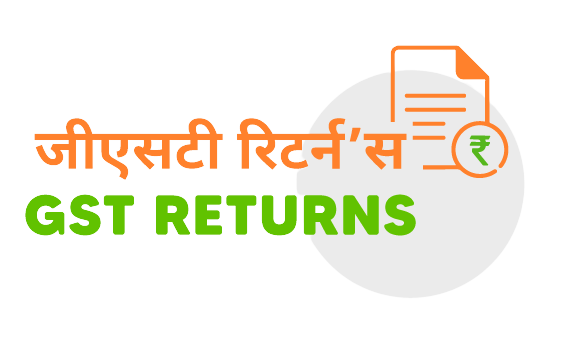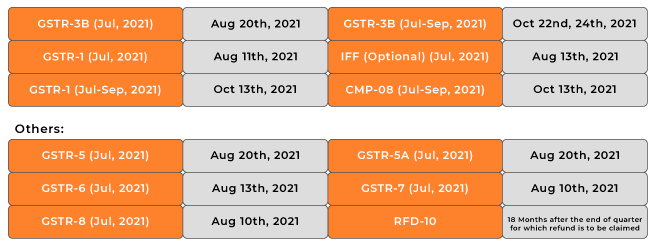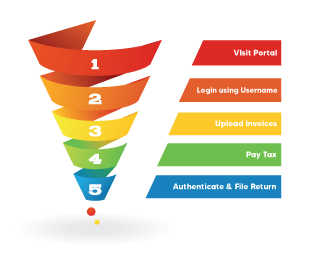
The introduction of GST into the Indian tax system has done away with several other taxes like central excise duty, service tax, customs duty, and state-level value-added tax. Thus, a single GST has eliminated the cascading effect of tax on tax .
Before GST was introduced, VAT or value added tax was applicable for any business that had an annual turnover of 20 lakhs. Services that saw a turnover of less than 10 lakhs did not have to pay service taxes.
Earlier start-ups with an annual turnover of 5 lakh had to pay VAT which would be very difficult for a business during the initial stages. But as GST has replaced VAT, businesses can set off the service tax on their sales.
Start-ups are making a strong presence online offering their services and products through their websites. Under VAT, there were many types of VAT laws, and the supply of goods through online, that is, E-commerce was never a well-defined one. For instance, if you need to deliver goods to various states, then you will have to file the VAT declaration first. After that, you will need to provide registration details about the trucks which deliver the goods. In many instances, goods end up being seized by the authorities due to lack of proper documents. GST has now removed all such confusing processes.
The pre-GST period witnessed a disorganized tax filing system. Presently, all taxes are paid online and major hassles that were a part of tax filing have been eliminated in the process of introducing GST. This has resulted in industries becoming more accountable and tax filing laws are better regulated than before.

for turnover upto 10 lakh per year
Rs 799 /MonthGST Data Storage
Dedicated GST Accountant
GSTR 1 Return Filing
GSTR 3B Return Filing
GSTR 2A Reconciliation
Phone & Email Support
GST Payment Facilitation
Email Reminder
Accountant Call Reminder
Email Reminder to Your
Vendors for Depositing GST
Call Reminder to Your
Vendors for Depositing GST
Assistance in GST Refund
Processing
GST Data Extraction Support
From All Software
Popular Valued Pack

for turnover upto 50 lakh per year
Rs 1399 /MonthGST Data Storage
Dedicated GST Accountant
GSTR 1 Return Filing
GSTR 3B Return Filing
GSTR 2A Reconciliation
Phone & Email Support
GST Payment Facilitation
Email Reminder
Automated Call Reminder
Email Reminder to Your
Vendors for Depositing GST
Call Reminder to Your
Vendors for Depositing GST
Assistance in GST Refund
Processing
GST Data Extraction Support
From All Software

for turnover upto 200 lakh per year
Rs 1699 /MonthGST Data Storage
Dedicated GST Accountant
GSTR 1 Return Filing
GSTR 3B Return Filing
GSTR 2A Reconciliation
Phone & Email Support
GST Payment Facilitation
Email Reminder
Accountant Call Reminder
Email Reminder to Your
Vendors for Depositing GST
Call Reminder to Your
Vendors for Depositing GST
Assistance in GST Refund
Processing
GST Data Extraction Support
From All Software
A relationship manager having experience in the Industry/Sector that you operate, will guide you through the process of GST registration and filings. They will also help you with specific tasks such as uploading invoices and also ensure that your filing are taken care of on time.
Our platform ensures that you get timely reminders well in advance of the deadline beyond which penalty will be applicable. In addition to this, your GST Accountant will also remind you periodically so that no deadlines are missed.
Monthly reports detailing the status of GST return filing including GSTR- 3B and the way forward will be shared with the clients by the GST Accountants.
Turnover determines the due dates for GSTR- 1. Businesses with sales upto Rs. 1.5 Crore can file GSTR 1 quarterly while others can continue to file Monthly.GSTR 3B is a monthly return that should be filed by every businesses.
Businesses will be benefited from the input tax reconciliation mechanism provided by the government to achieve neutrality in the incidence of tax and does not enter into the cost of production or cost of supply of goods.
Since you are busy doing your business, we can follow up with your customers on behalf of you for Depositing & filling their GST on time so you can relax and become free from tiresome GST comliances



GSTR1 or return of outward supplies must be filed by all taxpayers having regular GST registration. The due date for filing GSTR 1 return is the 10th of every month. For July, September and October, the GST return due dates are different from the normal schedule.
Suppliers must validate the auto-generated purchase information of their outward supply of goods and services. The form contains the following details.
Taxable recipients have to provide the following detail in this form during their GST filing.
Taxpayers filing this form already have their details electronically updated along with forms GSTR-1 and 2. Taxpayers must check and verify the above forms as and when necessary, and also provide the details underneath.
Businesses with a turnover up to Rs.75 lakh can opt for Composition Scheme and go for GST filing with the GSTR-4 form. They pay tax at fixed rates based on their business type. While they do not have a tax credit facility, they must also provide the following details.
NRIs must provide the following information while filing this form.
Input Service Distributors must provide the following details when they are completing their GST filing process. Some details are already electronically updated via forms GSTR-1 and 5.
Taxpayers who have deducted tax at source must provide the following details in their form. The TDS liability is generated automatically. The Electronic Cash Ledger refunds will be auto-generated.
E-commerce operators must provide the following details in their GST filing with form GSTR-8.
Filed by normal taxpayers, it contains both income and expenditure details. It is compiled and assorted with monthly returns. Filing this must accompany audited copies of annual accounts, and taxpayers can amend the previous return filings if necessary.
To be filed on cancellation of GST, taxpayers must provide the following details while their GST filing with this form.
Every individual registered under GST with their UIN (Unique Identity Number) must file this form. This is used to claim a refund of excess taxes paid in inward supplies.

Failure to file GST returns on time to can lead to penalties and cancellation of GST registration. If GST return is continuously not submitted for six months, then the GST registration would be cancelled, and the person would not be able to obtain another GST registration - unless all the late filing penalty is paid.
In case a person has no business, NIL GST return must be filed. Failure to file NIL GST return can lead to a penalty of Rs.20 per day for each of the GSTR-3B return and GSTR-1 return. Penalty of Rs. 50 applicable if there are any sales liability.
In addition to the above late filing fees, the person would also have to pay interest at the rate of 18% on GST payment remitted late to the Government. Subscribe to our accounting services to avoid late penalty fees in GST.
Turnover |
Due Dates |
Regular Scheme |
|---|---|---|
| More than 5 crores | 20th of Every month | All the states and UTs |
| Less than 5 crores | 22nd of Every month for Group A States | Chhattisgarh, Madhya Pradesh, Gujarat, Daman and Diu, Dadra and Nagar Haveli, Maharashtra, Karnataka, Goa, Lakshadweep, Kerala, Tamil Nadu, Puducherry, Andaman and Nicobar Islands, Telangana and Andhra Pradesh |
| Less than 5 crores | 24th of Every month for Group B States | Jammu and Kashmir, Laddakh, Himachal Pradesh, Punjab, Chandigarh, Uttarakhand, Haryana, Delhi, Rajasthan, Uttar Pradesh, Bihar, Sikkim, Arunachal Pradesh, Nagaland, Manipur, Mizoram, Tripura, Meghalaya, Assam, West Bengal, Jharkhand and Odisha |
Goods and Services Tax Network provides software through which you can file for GST return online. Here’s a step-by-step guide to filing GST return online:
Step 1: Visit the official GST portal i.e. https://gst.gov.in
Step 2: Login using username & password of provided by GST Department & Upload Sales & Purchase Invoices
Step 3:After uploading invoices, outward return, inward return, and cumulative monthly return have to be filed online. If there are any errors, you have the option to correct it and refile the returns. Details of outward supplies furnished by the supplier will be made available in GSTR-2A to the recipient.
Step 4: Enter amounts for CGST, SGST, IGST or other heads, as applicable. Thereafter, choose the relevant payment mode with bank details if applicable.
Step 5: Authentication of GST registration through Aadhaar number or DSC to complete filling

Form name |
Details |
Date of filing |
|---|---|---|
| GSTR-1 | Taxable suppliers to file outward supplies. | 10th of next month. |
| GSTR-2 | Taxable recipients to file inward supplies to claim the tax credit. | 15th of next month. |
| GSTR-3 | Taxable individuals file monthly returns based on the finalization of outward and inward supplies along with tax amount payment. | 20th of next month. |
| GSTR-4 | Composition suppliers to file quarterly returns. | 18th of next month. |
| GSTR-5 | NRIs who are taxable. | 20th of next month. |
| GSTR-6 | Input service distributor to file for a return. | 13th of next month. |
| GSTR-7 | Authorities conducting TDs to file returns. | 10th of next month. |
| GSTR-8 | Tax collectors and e-commerce operators to file supply details and tax collection details. | 10th of next month. |
| GSTR-9 | Taxable individuals to file returns. | 31st December of next year. |
| GSTR-10 | Taxable individuals with cancelled registration to file final return. | Within 3 months of cancellation of the order. |
| GSTR-11 | Individuals with UIN refund claims to file inward supply detail. | 28th of the month following the month for a statement was filed. |
GST FILING
GST or Goods and Services Tax replaced the numerous different taxes which were levied by Central and State governments on different products or services. While it was enforced in 2017, the GST Act was passed in the year 2019. This taxation system looks to streamline the numerous taxes levied on products, making it simple for the taxpayers, their collectors, etc. Additionally, it also makes tax filing easy since taxpayers have to file for just one tax.
WHAT IS THE GST RETURN?
Before going into the process of GST filing, it is important to understand what GST return means for business owners and service providers. GST returns essentially stands for filing of all GST. Every individual who is covered under the GST Act must produce their income to the Tax Department of India. This is known as return and it includes details of every sale and purchase.
Under this system of taxation, concerned individuals must file their GST return 26 times in a year. While business owners have to go for goods and services tax filing two times every month, they must also file two additional time half-yearly. Before moving into the process of filing GST return, it is essential to understand a few additional things.
WHO SHOULD FILE GST RETURNS?
In the GST regime, any regular business having more than Rs.5 crore as annual aggregate turnover has to file two monthly returns and one annual return. This amounts to 26 returns in a year.
The number of GSTR filings vary for quarterly GSTR-1 filers under QRMP scheme. The number of GSTR filings online for them is 9 in a year, including the GSTR-3B and annual return.
There are separate returns required to be filed by special cases such as composition dealers whose number of GSTR filings is 5 in a year.